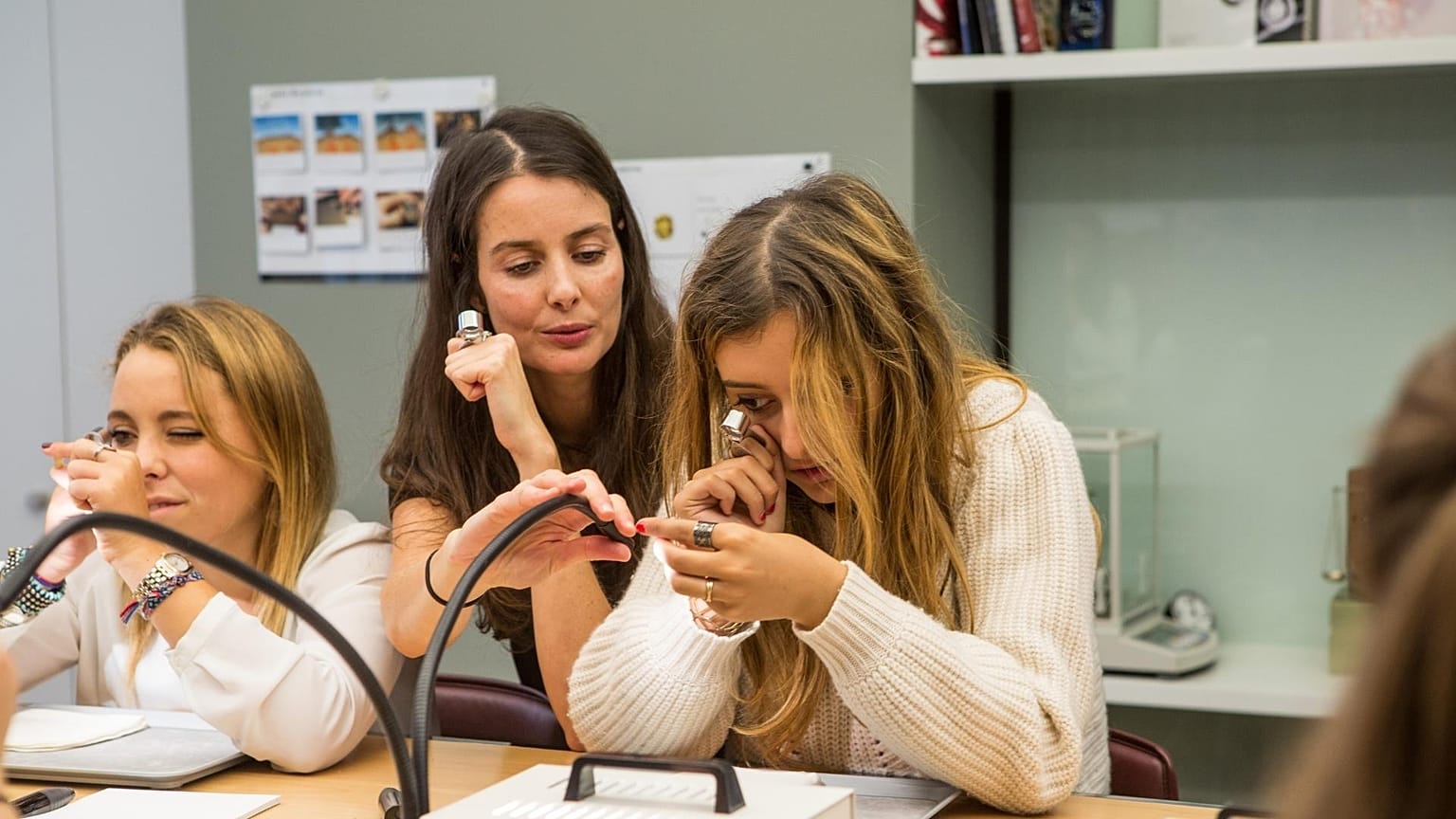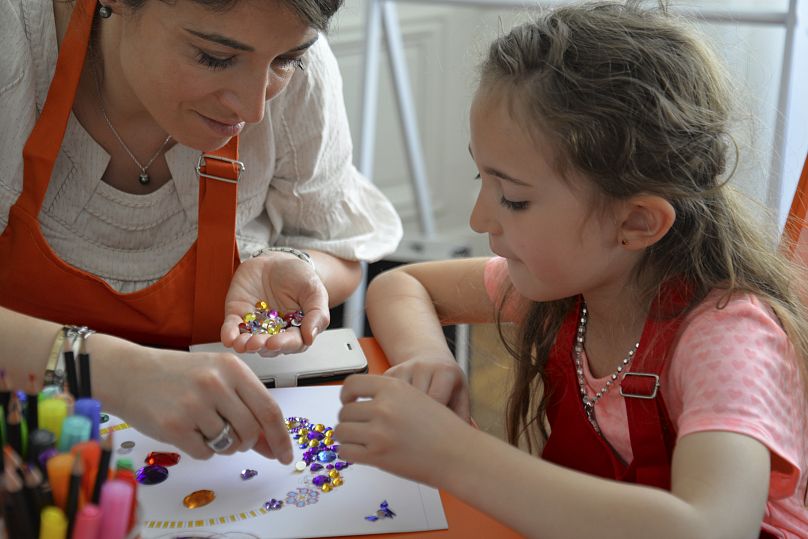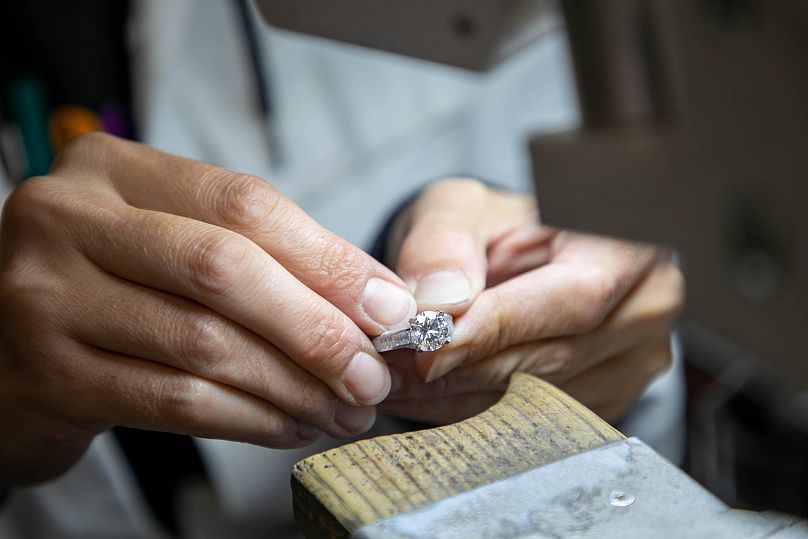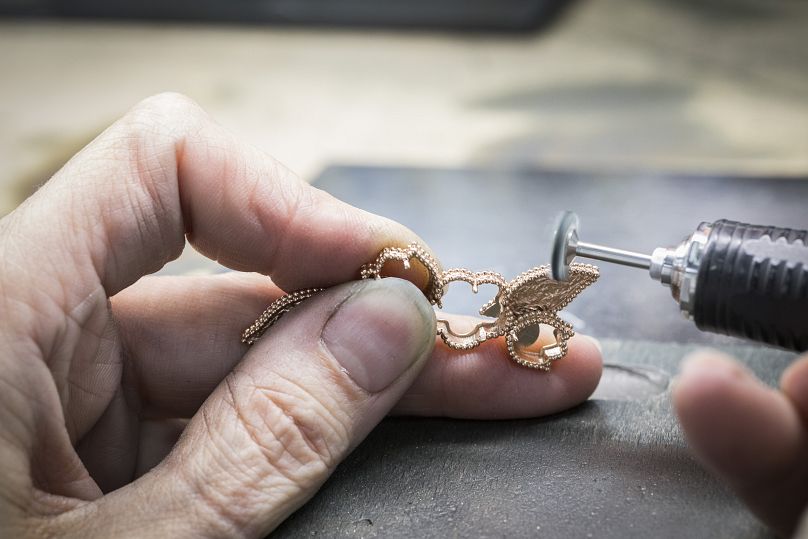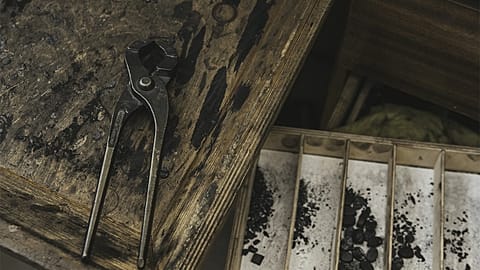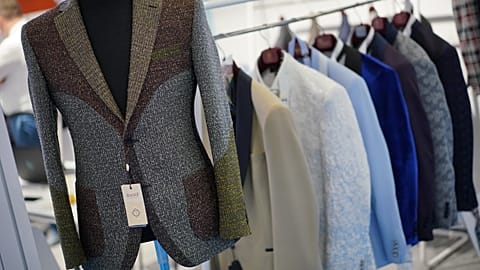Van Cleef & Arpels has hosted courses to train the next generation of jewellers in the artisanal trade, looking to inspire people who would have never considered a career in jewellery before.
“I find that each piece tells a story and communicates a certain vision of life,” Marie-Aude Stocker says as she considers what fine jewellery means to her. As a director of people, development and prospective at French luxury jewellery company Van Cleef & Arpels, she has spent over a decade poring over the stories that jewellery can tell.
The luxury jewellery business has long been an interest and vocation held by only the most elite in society. But brands are opening up, and Van Cleef & Arpels want that vision and the stories of jewellery to reach a wider audience. Wanting a wider reach may be a no brainer as a commercial strategy, but starting super-young isn't always the preferred method.
A jewellery course for anyone
Last December, the jewellery house (maison) hosted a course designed to open the eyes of the public and schoolchildren to the potential of artisanal jewellery as a career. Working with a secondary school in Lyon, 200 students spent time learning the trade of jewellers and trying out the skills for themselves.
At the same time, Van Cleef also offered the ‘De Main en Main’ courses to the public, working alongside NGOs to give disabled children and those from underprivileged backgrounds access to the storied profession. There was also a programme held by the Parisian artisan jewellery school ‘L'École des Arts Joailliers’ that offered up opportunities for children as young as five to participate.
The idea behind the courses was to make working in jewellery feel accessible to anyone in French society. “We realise that traditionally, these metiers and know-hows come from families with the right background or because you learnt about them in art school,” Stocker says.
“When you don’t know about these professions, you don’t allow yourself to dream about them,” she adds. “We want to make sure that our metier is accessible to anyone, regardless of their background,” Stocker says.
During the courses, the Lyon students learnt about all the stages of jewellery creation across the professions of jeweller, gem-setter, polisher and 3D designer. Finally, they created their own pieces to take home.
“We wanted them to discover all these skill sets so that they could leave and say, ‘oh, this is something I can not only dream of doing, but actually imagine doing as my career’.”
Reflecting on how the students appreciated the course, Stocker was happy to see the children’s eyes open up to the profession. “It was very moving to see some of the children’s eyes open up as they discovered the magic of jewellery. Watching them open up to their own creativity was especially satisfying as with x number of kids around a table, they all left with different boxes, different swords, different crowns. They got to understand the potential they have to be creative while creating a jewel they can be proud of.”
A historic profession
As they opened their doors to show the next generation of high quality jewellers what it takes to become a success, Van Cleef are keen to stress the high level of expectations the jewellery business asks.
“Jewellery making is still artisanal,” explains Opérations and Metiers director Eric De Rocquigny. “It’s still taking rare and precious materials, using traditional tools, and making a piece of art by yourself in the middle of a town.”
De Rocquigny believes that, while the business of jewellery has progressed in how they communicate with customers, the actual work of producing the pieces has stayed largely the same for centuries.
To become a jeweller isn’t just a hobby, it’s a career. “If you like to do things with your hands, and to develop yourself in a career you won’t have to change jobs every two or three years, in jewellery, you will have time to learn and grow with people who have done it for the last 10 or 20 years,” De Rocquigny says.
Sustainability is the future of tradition
The demand for such an artisanal trade is also increasing. “The industry is expanding,” De Rocquigny says. “All the maisons are facing the same question, ‘how can we make this expertise more sustainable’,” he notes. As maisons consider how to sustainably source their jewels, the process of making jewellery also looks to the future.
“We work with expensive materials, and as the price increases because of sustainability, origin and rarity, it means we can also afford the time to work carefully. As the profession grows, we can still ensure the time and care that goes into it stays the same, if not increasing,” he says.
With that same eye on the future, Van Cleef is working with the teachers from the Lyon school to make sure there are follow up internships for any wannabe artisans. To De Rocquigny, the process of creating jewellers and jewellery alike defines humanity in total. “The way you work in jewellery is mixing the expertise of so many people - the designer, the polisher, the sales associate and the marketer. It all depends on the weakest link and everyone must be at their best. To me, that’s analogous to humankind. We’re a weak animal alone, but we have strength when we work together.”















